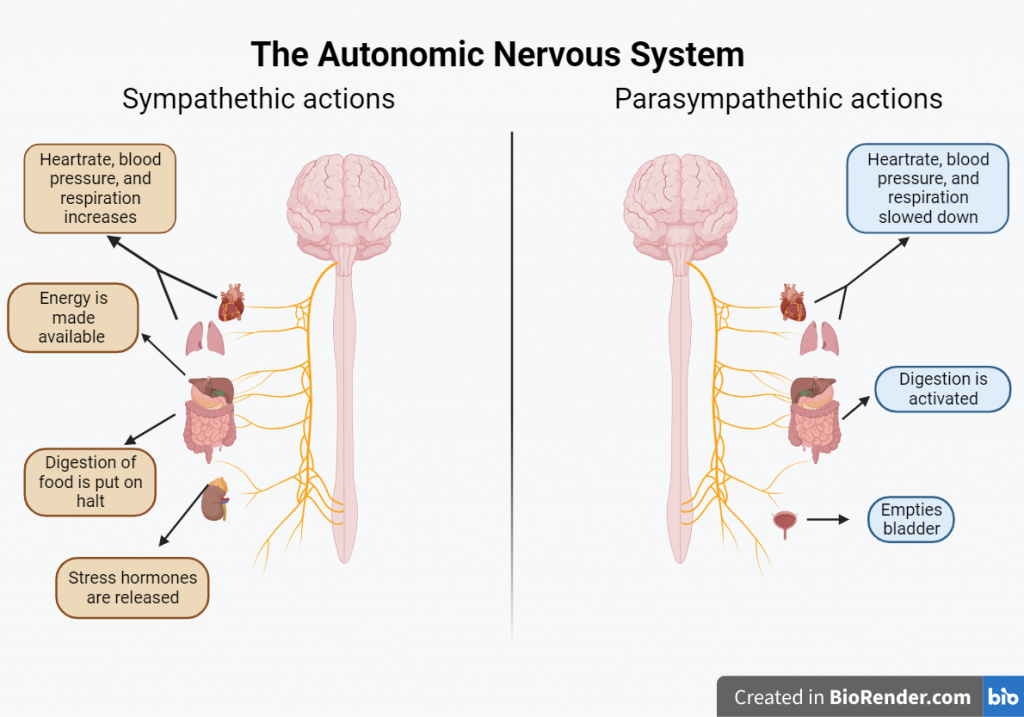This blog is part of this year’s summer series called Brain basics, in which we dive into the general functions and development of our brains.
Take a deep breath with me. In through the nose, then slowly let it out. Not that hard, right? While you continue reading this piece and relay your focus to the words that make up this sentence, your breathing will go on just the same. Pretty neat, huh?
The Autonomic Nervous System
Our brain and spinal cord make up our central nervous system (CNS). Throughout our body runs another system of nerves that connects the CNS to our organs. Within it, there is a specialized part that regulates automatic biological functions; the autonomic nervous system (ANS). It’s responsible for controlling all types of things in our body that we don’t think about doing ourselves. For example, it regulates heart rate, blood pressure, breathing, digestion, and sexual arousal.
If we take a closer look at the ANS, we can distinguish three distinct parts; the sympathetic, the parasympathetic, and the enteric. The latter controls the intestines independent of any control of the brain. The sympathetic nervous system gets us active by increasing blood flow, oxygen, and energy, while telling our digestive system to hold off for a minute. It is also an important driver of the stress response, enabling us to respond quickly to a threatening situation without having to think first.
The parasympathetic nervous system
The parasympathetic nervous system gets busy when we are not. It brings us into a state of “rest and digest”: Blood flow is redirected to the intestines, and heart rate, blood pressure, and respiratory rate are lowered, which is why you might begin to feel tired following a meal.

Sleep
Another important “automated” thing we do is sleeping. The more you try to purposely fall asleep, the less likely you are to succeed. An annoying phenomenon you might be familiar with.. For us to be able to let go of our consciousness, we have to relax. Naturally, the parasympathetic nervous system plays a role here. When you eventually do fall asleep, the parasympathetic nervous system kicks into gear to guide your brain through the different sleep stages. In this process, our bodies are recovered, the events of the day are processed, and newly made memories are strengthened for the long term. Then, when the sun rises, the sympathetic nervous system will awaken us by triggering the release of the stress-hormone cortisol, so that you can wake up refreshed and ready to take on the next day.
Now you know what things the ANS takes care of, so “we” don’t have to. In the ANS, we trust.
In the upcoming blogs of this series we’ll dive further into the anatomy, the development and the different functions of our brains.
Author: Lucas Geelen
Buddy: Viola Hollestein
Editor: Maartje Koot
Translation: Wessel Hieselaar
Editor translation: Marlijn Ter Bekke
